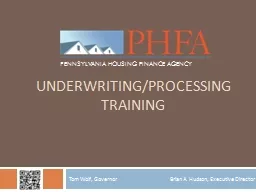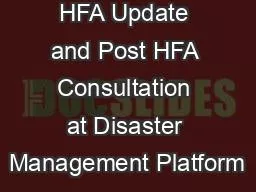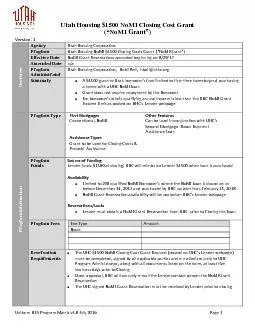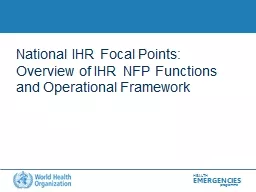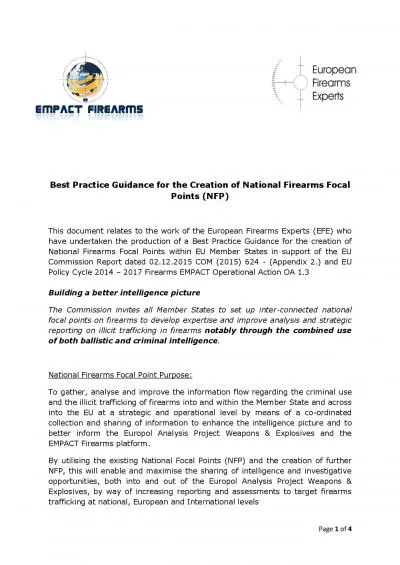PPT-Meeting Of European National Platforms and HFA Focal Points
Author : cleminal | Published Date : 2020-06-25
London 1113 November 2009 Safer Schools Their role within DRR Safer Schools Their role within DRR Why Start with Schools
Presentation Embed Code
Download Presentation
Download Presentation The PPT/PDF document "Meeting Of European National Platforms a..." is the property of its rightful owner. Permission is granted to download and print the materials on this website for personal, non-commercial use only, and to display it on your personal computer provided you do not modify the materials and that you retain all copyright notices contained in the materials. By downloading content from our website, you accept the terms of this agreement.
Meeting Of European National Platforms and HFA Focal Points: Transcript
Download Rules Of Document
"Meeting Of European National Platforms and HFA Focal Points"The content belongs to its owner. You may download and print it for personal use, without modification, and keep all copyright notices. By downloading, you agree to these terms.
Related Documents


